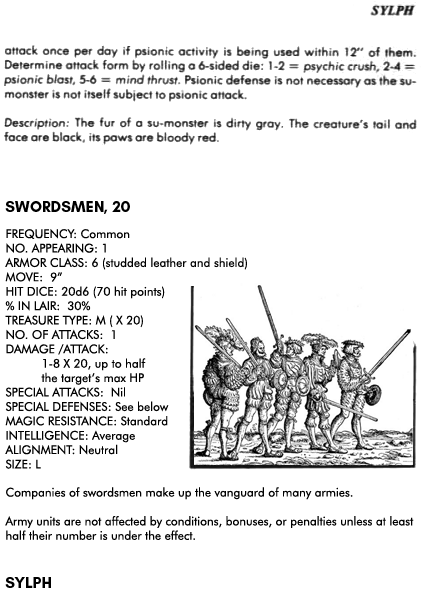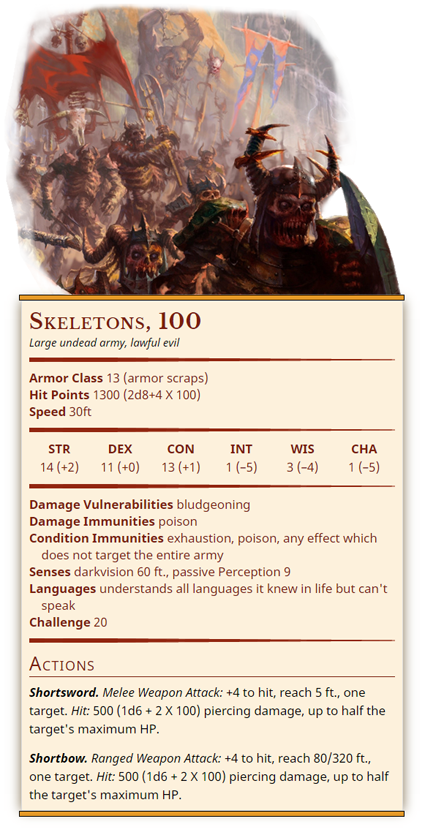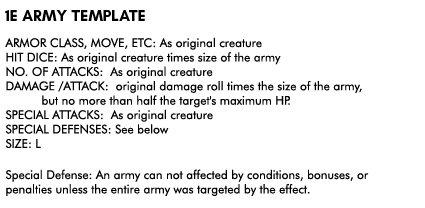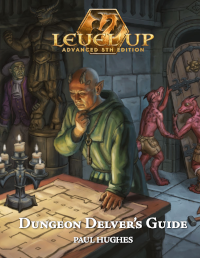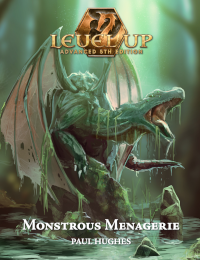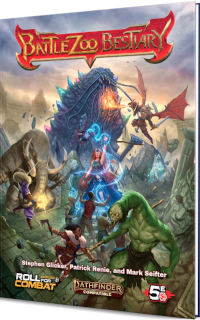You can be forgiven for thinking that OD&D is a medieval European fantasy game. After all, Gary Gygax himself says so. He describes the original D&D books as “Rules for Fantastic Medieval War Games” (on the cover) and “rules [for] designing your own fantastic-medieval campaign” (in the introduction). However, in the game itself, there’s precious little to suggest feudalism, Europe, chivalry, a post-imperial dark age, or even the existence of a monarchy at all. Apart from the technology suggested by the weapon list, it could just as well be a simulation of the professional meritocracy of Byzantium, or the city-state sovereignty of Barsoomian Mars. (There’s more explicit textual support in OD&D for Mars than there is for fantasy medieval Europe.) But neither of these strike the mark. OD&D’s cultural details suggest a society original to Gygax – nonsensical as a medieval fantasy, but coherent and striking as an American fantasy of empowerment and upward mobility. It’s an armor-clad repudiation of medieval feudalism, like Twain’s Connecticut Yankee.
It’s not feudal
The way you advance in a feudal society is to win glory in battle for your overlord. Then he grants you land, which is the main form of wealth. Unless you’re a peasant. Then you can never advance at all.
That’s not at all what happens in D&D. There is no overlord to grant you land. Land, instead of being a form of wealth, is completely free! (“At any time a player/character wishes he may select a portion of land (or a city lot) upon which to build his castle, tower, or whatever. The following illustrations are noted with the appropriate cost in Gold Pieces.”) The cost of building a structure is merely the a la carte cost of all its architectural elements. It costs nothing at all to acquire the land to build on, even inside a city.
Wealth in D&D is primarily in the form of coinage and jewels, not land and cattle, making the D&D economy more modern than medieval. Some have suggested that D&D takes place in a time of exploration and renaissance when coinage, and the middle class, is eclipsing the power of the nobility. I’ll go further. There is no sign that there is any nobility to eclipse, even a waning one.
If you build a castle in the “wilderness”, you have to clear the area of monsters for 20 miles around. You then gain control of a handful of villages within this area. You don’t have to compete against any other ruler or pay taxes to any overlord for these villages! This omission seems significant, since Gygax will always gleefully mention any relevant obstacle if it exists.
The people who live in villages are called either “villagers” or “inhabitants”, not “peasants,” “commoners” or “serfs.” They pay you taxes. If you piss off the villagers, the DM is encouraged to annoy you with “angry villagers”, “city watch”, “militia”, or “a Conan type.” Notable in its absence is any local form of knighthood, gentry, nobility, or ruling class to oppose you.
There are no knights
The word knight doesn’t even appear in OD&D. But there is one group of people who act distinctly knight-like. The wilderness contains castles, ruled by fighters, magic-users, or clerics. The fighters will challenge players to a joust (using Chainmail rules), taking the loser’s armor and offering hospitality to the winner. This has a sort of Arthurian chivalry to it, but Pendragon it is not. Gygax carefully avoids calling these folks “knights.” They’re fighting-men, with retainers (monstrous and human) and armies, looking very like the ones players can acquire. Furthermore, castle-owning fighting men are just as rare as castle-owning magic-users and clerics. The Outdoor Survival game board, which forms the default OD&D map, has a land area of 25,000 miles, half the size of England. There are about six castle-owning fighting-men in that area. In other words, castles of the wilderness aren’t dominated by an analogue of a knightly order, leavened by a few fantastic spellcasters. It looks, rather, as if they were built by a small handful of adventurers, appearing in roughly the class proportions of a typical adventuring party. (Fighters are, if anything, under-represented.)
There are no vassals
Let’s talk about how you gain followers. Gary says, “It is likely that players will be desirous of acquiring a regular entourage of various character types, monsters, and an army of some form.” In a truly medieval game, there’s a model for that: people swear themselves to your service in exchange for your protection. You raise an army by requiring service from peasants who live on your land. In other words, you gain vassals. D&D ignores this model, replacing it with one in which you pay retainers and specialists by the month. Loyalty is bought with a mixture of cash and charisma. You can hire armies, too, from Light Foot to Heavy Horsemen. (No knights.)
There are no kings
There’s no evidence of a monarchy. You never have to declare fealty to anyone. While you can create a barony, there is no way to level up and become a duke or King. There are no rules for controlling territory more than a day’s ride from your castle. In the hostile emptiness of OD&D’s wilderness, power doesn’t travel well.
The only mention of kings in the little brown books is in the descriptions of humanoid monsters, e.g. in a goblin lair “the ‘goblin king'” will be found. (Gygax quotes the term “goblin king”.) It seems unlikely that the term implies a crown, a system of divine right, inheritance laws, etc. Since a goblin king leads a single lair of 40-400 goblins, he’s probably just the local boss, just like the less evocatively named “leader/protector type” who rules every 30-300 orcs.
There is no lost empire
There certainly seems to be a power vacuum in the world of OD&D, ready for the player/characters to exploit. What used to fill that vacuum?
There’s no evidence for (or against) the idea that OD&D takes place in a dark age after a fallen Roman Empire analogue or during the death throes of a feudal kingdom. Sure, someone built those “huge ruined piles” under which lie the dungeons. But based on the treasures to be found there, the dungeon builders were part of a coinage economy just like the current one. There hasn’t even been significant inflation or deflation since the dungeons were built. The richest dungeon treasure hoard, on level 13 and deeper, averages out to about 10,000 GP in coin. That’s as much as a baron can earn from a year’s worth of taxes: not an insignificant sum to sock away in a dungeon, but not kingly or imperial either. This doesn’t suggest that dungeons are relics of a far richer past. It seems rather that things used to be like they are right now.
There are few European details
The monster descriptions of “men”, “elves”, and “dwarves” don’t suggest that the game is set in a European culture. The types of “men” are Bandits, Berserkers, Brigands, Dervishes, Nomads, Buccaneers, Pirates, Cave Men, and (perhaps) Mermen. Berserkers are a little Nordic in flavor, but are balanced out by Dervishes and Nomads from the “desert or steppes”.
The government suggested by the player’s “barony” is almost completely a-cultural. A player builds a stronghold, and then they can extort money from the surrounding people. This is the structure of every non-nomadic human society. The only European element is the technology level of your stronghold: it has merlons, barbicans, etc.
The D&D weapon list has a medieval feel to it, but partly that’s just because that’s what we’re expecting to find. In fact, it’s a sort of survey of (mostly) pre-gunpowder weapons. Most of the weapons and armor appear in ancient Europe and in Asia as well as in medieval Europe. Partial exceptions: Composite bows are mostly non-European, while longbows are associated with Europe. The halberd is basically a Renaissance weapon, and the two-handed sword appears in medieval Europe, India, and Japan, but not the ancient world. No one knows what “plate mail” is supposed to be.
If not medieval, what?
All over, the D&D rules seem to be explicitly eschewing a medieval, feudal model in favor of a cash-based economy, a nonexistent or powerless government, and a social-classless society in a sparsely inhabited, unforgiving world.
If the OD&D rules suggest any government at all, it is a meritocracy, or more precisely, a levelocracy. Creatures with more XP and hit dice rule lower-level ones, from settled barons and goblin kings to wandering bandits and nomads. This is not only non-medieval, it is anti-feudalistic and anti-aristocratic. Level requirements for baronies are at odds with the hereditary gloss added to D&D in nearly every subsequent setting.
OD&D also exhibits an obsession with money-gathering for its own sake that is suggestive of mercantilism or capitalism.
D&D is not “fantastic-medieval.” It’s not even “fantastic renaissance” or “fantastic-post-apocalyptic.” It’s “fantastic American history.”
How did Gygax set out to write a fantastic-medieval game and end up writing an American one?
OD&D is meant to be setting-free. The game’s referee is to create his or her own campaign, ranging in milieu from the “prehistoric to the imagined future” (with emphasis on the medieval, especially for beginners). In the later 1e Dungeon Masters Guide, Gygax further explains, “There are dozens of possible government forms, each of which will have varying social classes, ranks, or castes. Which sort you choose for your milieu is strictly your own prerogative. While this game is loosely based on Feudal European technology, history and myth, it also contains elements from the Ancient Period, parts of more modern myth, and the mythos of many authors as well. Within its boundaries all sorts of societies and cultures can exist, and there is nothing to dictate that their needs be Feudal European.”
But it is very difficult to write a document with no cultural assumptions at all. Gygax consciously excluded the trappings of a medieval society, and filled that vacuum with “real life” American details. Gygax wrote D&D in a country where, 100 years before, frontier land was considered free for the taking. (19th century propaganda depicted the land’s original Native American inhabitants as inimical savages, like orcs). At the same period, the success of America’s industrialist “robber barons” taught the country that birth and family weren’t the keys to American power; the American keys were self-reliance, ability, and the ruthless accumulation of money.
While it’s possible that D&D’s modern details slipped into the game unobserved,
Gygax may have been quite aware of his game’s implicit setting. After all, his original pre-publication Greyhawk campaign drew heavily from his own American experience. It took place on a United States map, with Greyhawk at Chicago, and Dyvers at Milwaukee. His buddy Don Kaye’s Greyhawk character, Murlynd, was a gunslinger from Boot Hill. I think it’s quite likely that Gygax intentionally gave his game a New World spin.
 Intentional or not, OD&D represents a milestone in American fantasy – and maybe the last un-muddled example of the genre it inspired. Most of D&D’s thousands of imitators, in game and fiction, preserve the game’s democratic bones (cash economy, guns for hire, rags to riches stories) while overlaying a medieval-European skin. The combination is not fortunate. Gygaxian levelocracy, where a villager can rise to become a baron or a “Conan type”, is fundamentally incompatible with the European fantasy typified by Lord of the Rings, in which no fellowship can alter the fact that Sam is by birth a servant, Frodo a gentleman, Strider a king, and Gandalf a wizard.
Intentional or not, OD&D represents a milestone in American fantasy – and maybe the last un-muddled example of the genre it inspired. Most of D&D’s thousands of imitators, in game and fiction, preserve the game’s democratic bones (cash economy, guns for hire, rags to riches stories) while overlaying a medieval-European skin. The combination is not fortunate. Gygaxian levelocracy, where a villager can rise to become a baron or a “Conan type”, is fundamentally incompatible with the European fantasy typified by Lord of the Rings, in which no fellowship can alter the fact that Sam is by birth a servant, Frodo a gentleman, Strider a king, and Gandalf a wizard.
OD&D’s American strain of fantasy didn’t even last within TSR. In 1980, Gygax himself reworked the World of Greyhawk into what looks, from its cover, like a supplement about Arthurian Knights.
But it’s worth taking a step back from the medieval-fantasy cliches that overran later D&D publications, and playing the original, more coherent setting: A swords-and-sorcery world, empty of government, where anyone can pick up a sword, become a hero, and live the American dream.
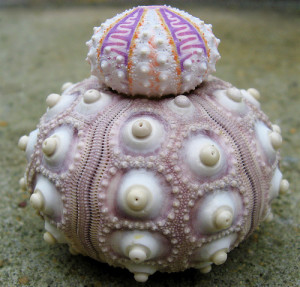 1: Make up an encounter that’s related to your campaign or to one of your characters. If nothing springs to mind: you meet a plane-traveling evil level-15 wizard from the world of Mystara. He/she is searching for a Sea Anemone of the Magi said to be lost in this dimension, and suspects the PCs of trying to get it first. He/she will not attack unless that suspicion becomes a certainty. He/she will trade help or information, but offers nothing for free. His/her skin is covered with weird flowers and he/she detects magic at will (see encounter 4).
1: Make up an encounter that’s related to your campaign or to one of your characters. If nothing springs to mind: you meet a plane-traveling evil level-15 wizard from the world of Mystara. He/she is searching for a Sea Anemone of the Magi said to be lost in this dimension, and suspects the PCs of trying to get it first. He/she will not attack unless that suspicion becomes a certainty. He/she will trade help or information, but offers nothing for free. His/her skin is covered with weird flowers and he/she detects magic at will (see encounter 4).
